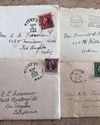
One of the perks of keeping bees (or having a local source of honey) is the opportunity to try new things with the honey and beeswax that might otherwise be cost prohibitive.
My father and I keep four hives and have found many uses for the honey we extract since we started in 2012.
We’ve given wax to a relative for her skin creams, made lip balm, and melted it to “paint” on new frames for the beehives. The latter encourages the bees to make use of the new sections, as they are attracted to beeswax and will harvest it for re-use.
It is also said a half-teaspoon per day of local honey taken year-round will help reduce seasonal allergies, due to the tiny doses of local pollen found in the honey.
Another use for the honey is making mead — it is considered one of the oldest known intentionally alcoholic beverages in human history.
Our interest in mead was piqued when a friend named Chuck brought us samples of homemade mead in a variety of flavors. It was smooth, interesting, flavorful and intriguing.
We accepted his challenge to try making some of our own. After a bit of research, the first two batches I attempted were a basic “show” mead — a simple traditional recipe — and a Bochet (burnt honey) variety.
Be forewarned, this is not a hobby for those who need instant gratification. Honey takes a long time to ferment, and the entire process took about a year.
The wait was worthwhile. They turned out so well, we were hooked.
This story is from the November 2019 edition of The Good Life.
Start your 7-day Magzter GOLD free trial to access thousands of curated premium stories, and 8,500+ magazines and newspapers.
Already a subscriber ? Sign In
This story is from the November 2019 edition of The Good Life.
Start your 7-day Magzter GOLD free trial to access thousands of curated premium stories, and 8,500+ magazines and newspapers.
Already a subscriber? Sign In

Nita Paine
‘I love that we provide an outlet to people to express themselves, to find out who they are’

Looking at life from a different angle now
Bout with cancer, plus pandemic made couple wonder: Why wait to really live?

Keeping family ties strong
Twelve months of COVID makes for a long year away from kids and grandkids

It's a kick to be a zebra — or a canary
When making the call is your calling

Saved family letters tell of war horrors, peacetime hopes and dreams
Loving letters from long ago

Varied Thrush: Making a bold statement
Globally, the thrush family contains 169 viable species; three other thrush species are now extinct.

Clean shots
For real estate photographer, the art is in the uncluttered details

Visiting the glory years of our parents
Obituaries – They’re really NOT for the dead

Going deep with Dan Feil
Warm crystal clear water, incredible fish, spectacular scenery, why not jump off a boat in the tropics?

Bringing a glow to the night
Who says outside lights are just for Christmas time? Drivers on Maple Street in Wenatchee will now see lights year-round.